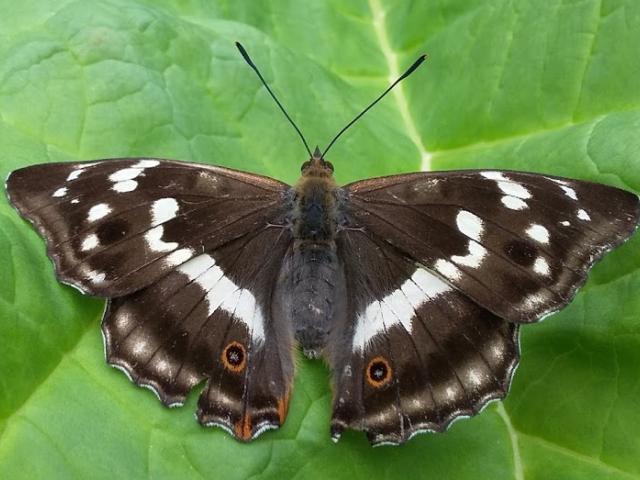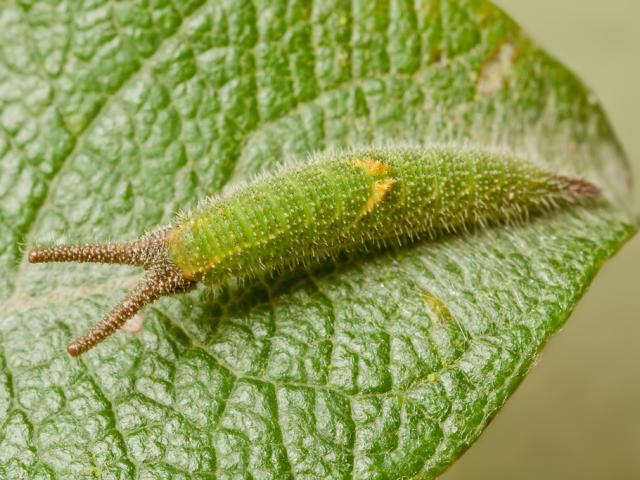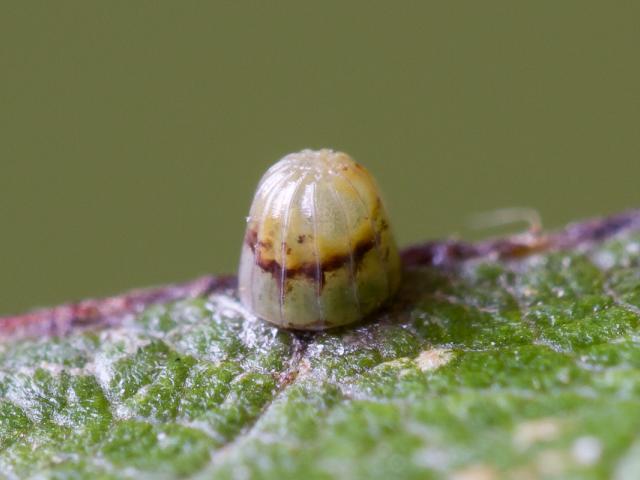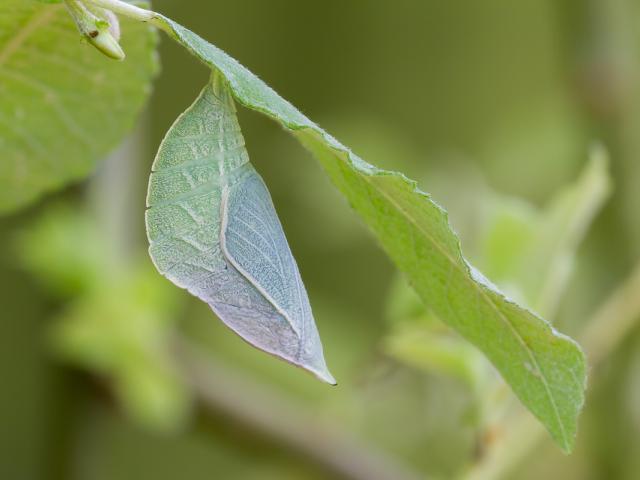Each month we’ll be finding out more about a species of butterfly or moth. This month, let’s meet the… Purple Emperor
Common name: Purple Emperor
Scientific name: Apatura iris
Size: Its wingspan is 75-84mm
When does it fly: Between July and August
Where does it like to live: This elusive butterfly likes flitting around the tops of trees in areas where there are vast swathes of broadleaved woodland or clusters of smaller woods with a good supply of willow.
Where you can see it: The Purple Emperor is currently restricted to southern and central England; however, it has been on the move in recent years and projects are currently underway to tempt this majestic butterfly further north and into Derbyshire.
Amazing fact: Despite its lofty name, the male Purple Emperor is actually very down to earth – if you tempt it with a bit of poo. That’s right, the male Purple Emperors come down from the trees to feed on salts and sugars from animal droppings, road surfaces or even on rotting carcases.
“I was lucky enough to live in a place once where there were Purple Emperors, and when I got home from a very sweaty walk, I’d leave my boots outside. On a number of occasions, they would come down and sip the sweat out of my sweaty boots.” – Chris Packham, Vice President of Butterfly Conservation.

The Purple Emperor is a bold and beautiful butterfly. The male has vivid purple wings with striking white lines and orange-ringed eyespots under the forewing. Although lacking the purple, the female also has vibrant patterning. However, it’s more likely to be confused with the more muted White Admiral, which has a similar appearance and, not so helpfully for our recorders, enjoys hanging out in the same places.

Like the adults, the Purple Emperor caterpillars also like to put on a show. They are bright green with yellow spots and stripes, and two protrusions from their heads which look like horns.
Male Purple Emperors are known to gather in trees (often Oak) sometimes known as ‘master trees’. They may even travel up to a kilometre to get to these trees, which are usually the tallest or on a high point in the wood. The reason for all that effort? They’re hoping to find a girlfriend. These high spots give them an excellent vantage point from which to look out for passing females. The males will patrol their chosen treetop patch in search of a prospective mate and show off their incredible speed by aggressively chasing away anything that strays into their territory – even birds!
The female, if impressed, will lead the male to a more secluded spot in the canopy to mate. However, females which have already mated may perform the ‘rejection drop’ – slowly floating towards the ground until the male takes the hint and leaves.

The female Purple Emperors lay their eggs on willow plants – usually Goat Willow, which is their favourite – from late June to mid-August. The caterpillars hatch from late July onwards and will stay as a caterpillar until the following May – its colours and appearance changing with the seasons to camouflage itself. And this caterpillar is a master of camouflage!

When ready to pupate, the Purple Emperor caterpillar will create a silk pad under a willow leaf from which to suspend its cocoon – but good luck spotting it, it’s perfectly disguised as the willow leaf it’s suspended from! After a few days, the adult butterfly is ready to emerge and show off its dramatic transformation.
Sadly, this magnificent species declined steadily during the twentieth century, leading to its current restricted range. However, it has expanded into new areas in recent years, giving hope for the continued reign of ‘His Imperial Majesty’.
Find out more about the Purple Emperor.


